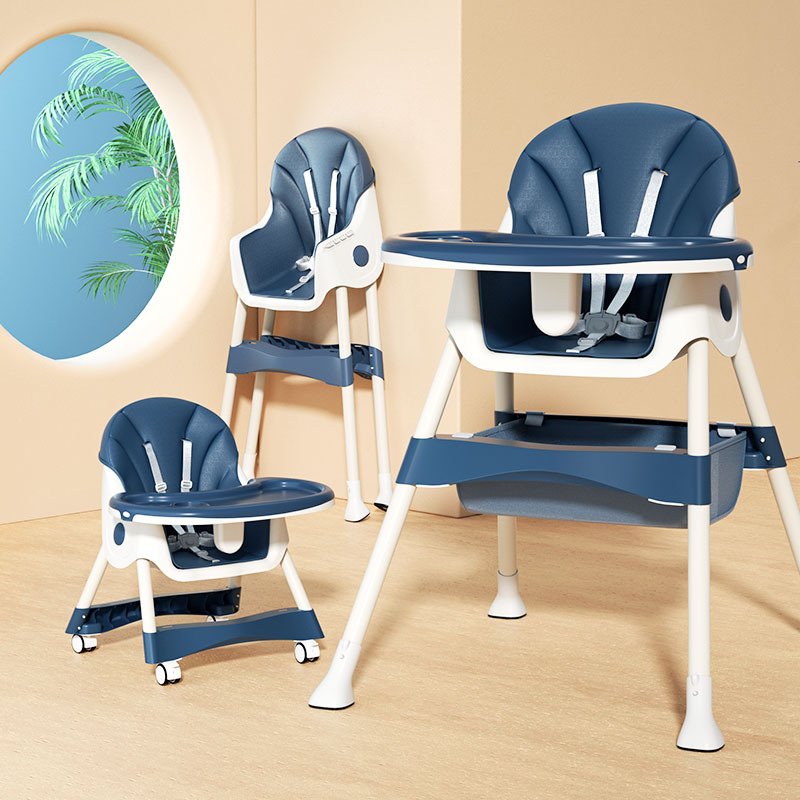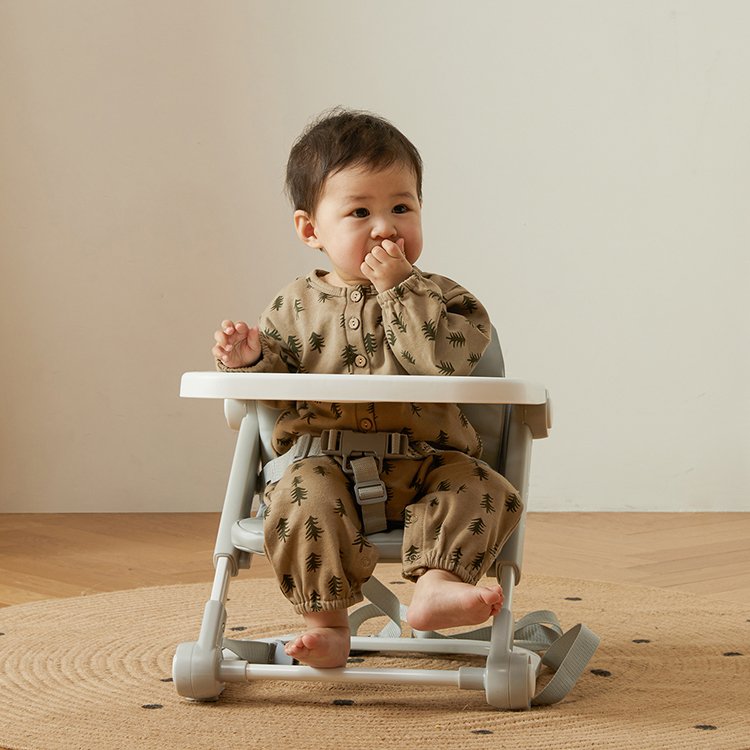Introduction
Choosing between a booster chair and a high chair might seem like a small decision, but for parents, it’s a big deal. Feeding time can be joyful… or chaotic. The right chair can make the difference between a smooth mealtime and one that ends in food everywhere. So, which one should you get? Let’s break it down in a fun, easy-to-digest way.
Understanding the Basics
Before we compare, let’s make sure we’re on the same page.
What Is a High Chair?
A high chair is a tall, standalone feeding chair designed specifically for babies and toddlers. It usually comes with a tray, a harness, and a sturdy base. High chairs lift your baby to table height so you can feed them easily. They’re often cushioned and come with features like adjustable height or recline.

High Chair for Toddler
Light Weight Portable Baby High Chair for Both Infants and Toddlers
Features
- Stable & Safe Structure
- Adjustable Settings
- Comfortable Seating
- Removable Tray
- Foldable & Portable Options
- Modern Aesthetic
What Is a Booster Chair?
A booster chair (or booster seat) is more compact and designed to attach to a regular dining chair. It “boosts” your child’s height so they can sit at the table with everyone else. Many models have straps, trays, and easy-fold designs for travel or compact spaces.

Portable Foldable Booster Chair for Baby
High Chair for Toddlers Folding Portable Booster Seat Babies/Kids Feeding Chair for Dining Table
Features
- Stable and Comfortable
- Fold and Take it Anywhere
- 4 Adjustable Heights
- Easy Clean
- Easy to Install and Take Down
Key Differences Between Booster Chairs and High Chairs
Let’s compare these two feeding favorites side by side.
Design and Structure
High chairs stand on their own and take up more space. Booster chairs, on the other hand, are smaller and attach directly to a dining chair. If your kitchen is small, that’s already one point for boosters.
Age and Weight Suitability
High chairs are perfect for babies who are just starting solids—typically around 6 months. Booster chairs are better suited for older babies and toddlers (around 12–18 months and up) who can sit more steadily.
Portability and Space
This one’s easy—booster chairs win. They’re lightweight, often foldable, and ideal for travel or dining out. High chairs are bulkier, better suited for staying put at home.
Ease of Cleaning
Some high chairs come with padded seats that can trap crumbs and spills. Booster seats are often simpler—smooth surfaces that wipe clean in seconds. If you hate cleaning (and who doesn’t?), boosters might save your sanity.
Safety Features
High chairs are built for stability with wide legs, harnesses, and safety bars. Booster chairs are safe too, but they rely on the sturdiness of the chair they’re attached to. So you’ll need to make sure it’s securely fastened.
Price Comparison
In general, booster chairs are more budget-friendly. High chairs can range from $80 to over $300 depending on features, while boosters often fall between $30 and $100.
Pros and Cons
Advantages of High Chairs
- Perfect for young babies who can’t sit upright yet
- Stable and sturdy design
- Often come with adjustable trays and reclining seats
- Dedicated feeding space for easy cleanup
Disadvantages of High Chairs
- Bulky and takes up floor space
- Harder to transport
- Pricier than booster seats
- Cleaning all the nooks can be annoying
Advantages of Booster Chairs
- Portable and easy to store
- Lets your child sit at the “big kid” table
- Great for travel and restaurants
- More affordable
Disadvantages of Booster Chairs
- Not ideal for younger infants
- Depends on the stability of the adult chair
- May not offer as much support
- Smaller trays or none at all
Which One Is Better for You?
Here’s where it gets personal. Your choice depends on your baby’s age, lifestyle, and space.
For Newborns and Early Feeders
Go for a high chair. It provides the right posture and safety for tiny bodies that need extra support.
For Toddlers and Older Babies
A booster chair lets them feel more independent by sitting at the table with family. It’s also great for transitioning out of the high chair phase.
For Families with Limited Space
A booster chair saves space and clutter. You can simply strap it onto an existing dining chair and tuck it away afterward.
For Travel or Outdoor Use
If you’re always on the go, a foldable booster seat is a lifesaver. Many models come with shoulder straps for easy carrying.
How to Choose the Right Feeding Chair
Buying a feeding chair shouldn’t feel like rocket science. Here’s how to simplify the decision.
Consider Your Baby’s Age and Stage
If your baby can’t sit without support, stick with a high chair. For toddlers who can sit independently, boosters are perfect.
Look at Your Lifestyle and Space
Small apartment? Go booster. Large kitchen? A high chair might fit perfectly. Your lifestyle should dictate your choice, not the latest trend.
Check Safety and Stability
Always ensure the chair has secure straps, non-slip pads, and a five-point harness if possible. Wobbly isn’t cute—it’s dangerous.
Think About Cleaning and Maintenance
Feeding gets messy. Choose materials that are easy to wipe clean, and avoid complex cushions that soak up spills.
Common Mistakes Parents Make
Even the best parents can slip up—here are the common pitfalls.
Ignoring Age Recommendations
Each product lists suitable ages and weights. Don’t skip this step! Using a booster too early can be risky.
Overlooking Safety Straps
Never assume your baby will sit still (spoiler alert: they won’t). Always buckle them in, no matter how short the meal.
Choosing Style Over Function
Sure, that trendy high chair looks good on Instagram, but will you still love it when spaghetti sauce hits the cushion?
Expert Tips for Safe Feeding
Always Supervise Mealtime
Even with straps and safety locks, babies should never be left alone while eating. Choking risks are real.
Keep the Chair on Stable Ground
Avoid uneven floors or soft rugs. The chair should always sit flat and stable.
Clean Regularly to Prevent Germs
Babies drop, spill, and smear food everywhere. Clean the tray and seat after every meal to prevent bacteria buildup.
Final Thoughts
When it comes to booster chair vs high chair, there’s no one-size-fits-all answer. If your baby is young and just starting solids, a high chair is your best bet for comfort and safety. If you’re tight on space or your little one is older and wants independence, a booster chair wins the day.
Ultimately, the best chair is the one that fits your baby’s needs, your lifestyle, and keeps mealtime enjoyable. Because when your baby eats happily—you do too.
FAQs
1. Can I use a booster chair for a 6-month-old baby?
Not recommended. Most booster chairs are for babies who can sit unassisted, usually around 12 months.
2. Are booster chairs safe for dining tables?
Yes, as long as they’re securely fastened to a sturdy chair and the safety straps are used properly.
3. Can I travel with a high chair?
Some high chairs are foldable, but booster chairs are much easier to pack and carry.
4. How do I clean a high chair effectively?
Wipe after every meal, remove the tray for deep cleaning, and wash the straps regularly to prevent buildup.
5. When should I switch from a high chair to a booster seat?
Usually between 12–18 months, once your child can sit upright and starts joining family meals at the table.



